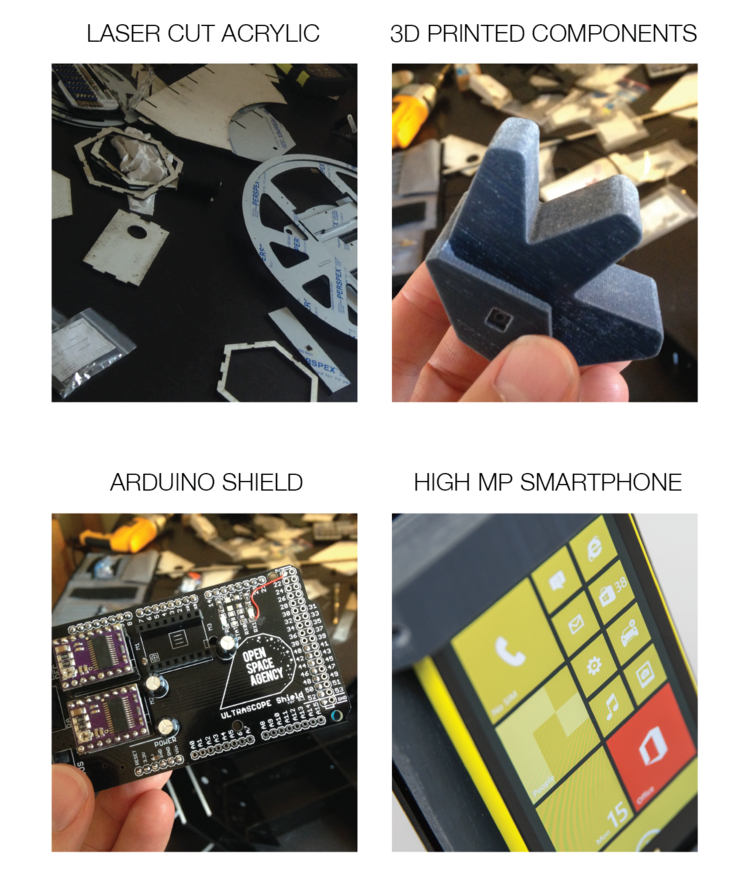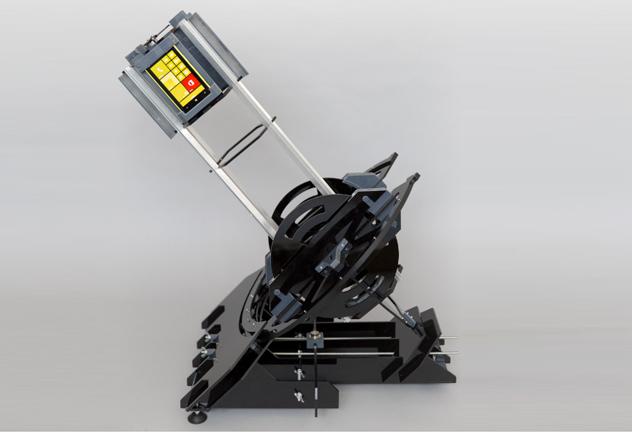James Parr Triumphs in Design and Space Exploration with the 3D Printed Automated Robot Observatory, Ultrascope
There’s nothing more inspiring than kids who know what they are meant to do, shedding the normal heroic career choices like fireman, policeman—or astronaut. As a kid, James Parr knew he wanted to grow up and explore space, but with his feet safely on the ground. Driven by a sense of design and a slight fear of heights, he did not have any fantasies of playing the astronaut rocketing high into space. He was inspired by the ‘triumph of design.’
With that driving him, he kept himself planted firmly on terra firma and worked on making the type of history that interested him, with the founding of the OSA (Open Space Agency) collective—and by creating the first 3D printed automated robotic observatory, the Ultrascope, which is part of the OSA’s ‘Explorer Series.’ The Ultrascope is a 3.5-inch mirror automated robot observatory that can take images of space and perform photometry, which is the measuring of light.
“It wasn’t astronauts, rockets, or the moon that hooked me,” says Parr. “It was the triumph of design—hand-sewn spacesuits, intricate food packaging. The clever details that allow human beings to explore space are breathtaking.”
Parr has Microsoft and Lumia technology on his side for this project, which is a glowing recommendation in itself that they had keen interest in collaborating with the OSA for the Ultrascope. OSA is developing a range of open source automated robotic observatories (ARO) that have the ability to capture images from space which previously only professionals could achieve.
“We’re inspired that we live in an era where consumer technology now allows us to do things that were only exclusively available to professionals just a few years ago. Keen amateur astronomers can now download this design and software, 3D print and assemble their own hardware, which is an amazing development,” said Parr. “It opens up opportunities for people who have been gazing at the stars their whole lives, but haven’t, until now, been able to get involved.”
With a Lumia 1020 smartphone powering the Ultrascope at its core, the powerful device is able to be completely 3D printed, laser cut, and assembled in the user’s home. The 3D printed device is affordable and will allow many individuals, who have the interest, to capture professional quality celestial images.
“We’ve seen many inspired people create and capture amazing things using the powerful cameras on our smartphones, and looking deep in to space with the Lumia 1020 is a remarkable example of this consumer innovation again,” said Juha Alakarhu, Head of Imaging Technologies at Microsoft. “It’s great to see that the efforts of James Parr and the OSA with the Ultrascope, and I look forward to seeing the images as they continue to shape this exciting project. It’s wonderful to think this could be available to the masses in the near future.”
 Only the most recent technology has made this possible. The affordability of 3D printing, combined with microcontroller platforms like Arduino and Lumia 1020 have made this possible.
Only the most recent technology has made this possible. The affordability of 3D printing, combined with microcontroller platforms like Arduino and Lumia 1020 have made this possible.
The Ultrascope is still in beta testing, and OSA is currently looking for inspired individuals to test it, give input, and make suggestions for any enhancements. 3D plans of the Ultrascope will be available from OSA, with more models and designs being released within the next one to two years.
The OSA is comprised of designers, engineers, and scientists who have a passion for learning about and exploring space.
“We’re using off the shelf technology to create a space program that we can all become part of,” says Parr. “You, me, my mum—now we can all be citizen space explorers.”
This is another good example of how 3D printing and manufacturing are allowing individuals, often novices, to break barriers that were etched in stone before, as only big companies had the funds and technology to do things that 3D printing has now opened up before us.
From the first 3D printer available to astronauts at the International Space Station to a variety of telescopes, many more creative and scientific minds are able to get involved and share not only what they build, but what they see. So as Parr says, “See you in space.”
Have you 3D printed any designs for telescopes? Is the Ultrascope something you might be interested in beta testing? Tell us about it in the 3D Printed Ultrascope forum thread at 3DPB.com.
Subscribe to Our Email Newsletter
Stay up-to-date on all the latest news from the 3D printing industry and receive information and offers from third party vendors.
You May Also Like
Nylon 3D Printed Parts Made More Functional with Coatings & Colors
Parts 3D printed from polyamide (PA, Nylon) 12 using powder bed fusion (PBF) are a mainstay in the additive manufacturing (AM) industry. While post-finishing processes have improved the porosity of...
3DPOD Episode 193: Flow and What’s Possible in 3D Printing with Ricky Wildman, University of Nottingham
Ricky Wildman is working on 3D printing pills, but, as Professor of Multiphase Flow and Physics at Nottingham, he does a whole lot more. His research encompasses the characterization of...
3D Printing Webinar and Event Roundup: March 17, 2024
It’s another busy week of webinars and events, including SALMED 2024 and AM Forum in Berlin. Stratasys continues its in-person training and is offering two webinars, ASTM is holding a...
3D Printed Micro Antenna is 15% Smaller and 6X Lighter
Horizon Microtechnologies has achieved success in creating a high-frequency D-Band horn antenna through micro 3D printing. However, this achievement did not rely solely on 3D printing; it involved a combination...

































